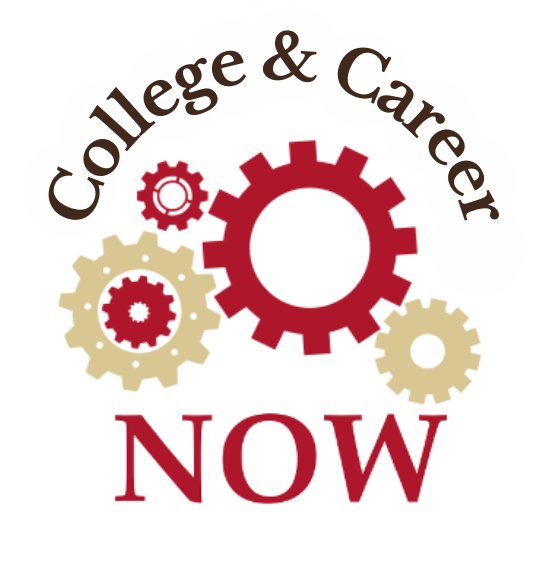
Career Academies as a Strategy to Promote College and Career Readiness for High School Students
By Dr. Edward Fletcher
From The Ohio State University
The most critical contemporary objectives of secondary schools in the United States are to prepare students to be college and career ready. Yet, definitions of what it means for students to be college and career ready are far ranging and clarity on the concepts are emerging (Fletcher et al., 2018). Some definitions of college and career readiness emphasize the need for school personnel in secondary schools to increase the rigor, standards, and number of course credits students acquire within the core academic programs (e.g., English, mathematics, and science) (Achieve, 2010; Chester, 2018; Conley, 2005; McClarty et al., 2018; National Center on Education and the Economy, 2007). Other definitions of college and career readiness include the need for preparing students for college (typically aimed at a baccalaureate degree) without subsequent remediation needs (Conley, 2005; National Center on Education and the Economy, 2007), as well as ensuring students leave high school with a college-going mindset (McClafferty et al., 2002). Nonetheless, most definitions of college and career readiness either equate college ready with career ready or leave out the notion of career readiness entirely (Stone & Lewis, 2012). In response to the recent push for promoting “college and career readiness,” the term is now widely used but often interpreted in a variety of ways, or defined with a narrow emphasis on college preparation (Stone & Alfeld, 2006).
Based on my research and professional experiences, I believe that college and career readiness should involve academic skills in addition to generalizable and specific occupational skills required in broad industry clusters. My definition of college and career readiness includes three indicators: participation in accelerated coursework (e.g., advanced placement, dual enrollment, gifted and talented, honors, international baccalaureate programs), college-going opportunities (e.g., college applications, college visits), and career development/work-based learning activities (e.g., industry certification attainment, internships). In acknowledgement of the modern college and career readiness goals, school stakeholders have reimagined curricular structures and programs to meet the current objectives of high school.
One of the most enduring high school reform initiatives aligned with the auspices of college and career readiness is the implementation of career academies. In the United States, it is estimated that there are over 8,000 high schools—including area regional career centers, charter, magnet, and traditional comprehensive high schools (school-within-a-school model) – in existence serving over 1 million students nationwide (Lanford & Maruco, 2019; National Career Academy Coalition, 2019). Career academies follow the educational structure found in programs of study with career pathways, and features small learning communities organized around career themes. The student experience in high school career academies includes integrating college preparatory curricula with career and technical education (CTE) courses, aligned with students’ career interests. The career academy model is strengthened by input from business and industry leaders connected with the career theme through an advisory board as well as faculty from postsecondary education representing associated college majors (Castellano et al., 2017; Kemple & Snipes, 2000). Further, career academies feature a variety of work-based learning (e.g., job shadowing, industry certifications, internships) opportunities for students.
In a recent case study (Fletcher et al., 2022), I found that a high school career academy (that focused on a STEAM theme) provided students with integrated and contextualized academic and career-related curricula, work-based learning and research lab experiences at local universities as well as engagement with the community through partnerships with business and industry – these are all elements of a career academy. Even further, the career academy in the case study had school-community partnerships and state funding to provide wraparound (e.g., academic, medical, and mental) services for students and their families. Given the national consensus for the need to prepare secondary students to be college and career ready, I recommend the following for schools:
- Form a coalition of both internal and external stakeholders to provide school and student supports. One such team member to the coalition is the school counselor. School counselors play a very important role in bringing stakeholders together to address the academic needs, socioemotional development, and college and career readiness of students, especially ethnically and racially diverse learners.
- Establish school-community partnerships that fully engage the community and garner resources to provide wraparound services (e.g., academic, medical, and mental services) for students and their families.
- Ensure that school leaders (e.g., administrators, teachers, and school counselors) embrace and acknowledge the dual emphases of high quality career and technical education (CTE) programs (such as career academies – a comprehensive school reform initiative), in preparing students to be both college and career ready. To that end, career academies could be an opportunity for students to explore their interests in careers, especially those that are high skilled, high wage, and in high demand, that they could envision themselves pursuing in college as a possible major.
Conclusion
I highlight the need for schools to offer course selections that include college and career pathways for students within a myriad of postsecondary options. It is equally important to involve various educational, community, and corporate partners to ensure students are properly prepared for life after high school. Further, career academies can serve as a space to provide academic and postsecondary resources for all students.
References
Achieve. (2010). Closing the expectations gap: Fifth annual 50-state progress report on the alignment of high school policies with the demands of college and career. Washington, DC: Author.
Castellano, M., Richardson, G., Sundell, K., & Stone, J. (2017). Preparing students for college and career in the United States: The effects of career-themed programs of study on high school performance. Vocations & Learning, 10, 47-70. doi: 10.1007/s12186-016-9162-7
Chester, M. (2018). Foreword: “A toast to Sofia and Hector’s future.” In McClarty, K., Mattern, K., & Gaertner, M.’s Preparing Students for College and Careers: Theory, Measurement, and Educational Practice (p. vii). Routledge: New York, NY.
Conley, D. T. (2005). College knowledge: What it really takes for students to succeed and what we can do to get them ready. Jossey-Bass, San Francisco, CA.
Fletcher, E.C., Warren, N., & Hernandez-Gantes, V.M. (2018). Preparing high school students for a changing world: College, career, and future ready learners. Career and Technical Education Research, 43(1), 77-98. doi:10.5328/cter43.1.77
Fletcher Jr., E. C., Hines, E.M., Ford, D. Y., & Moore III, J. L. (2022). From a bag lunch to a buffet: A case study of a low-income African American academy’s vision of promoting college and career readiness in the United States. Journal of College Access, 7(1), 11-33.
Kemple, J., & Snipes, J. (2000). Career academies: Long-term impacts on labor market outcomes, educational attainment, and transitions to adulthood. New York, NY: MDRC.
Lanford, M., & Maruco, T. (2019). When job training is not enough: The cultivation of social capital in career academies. American Educational Research Journal, 55(3), 617-648. doi: 10.3102/0002831217746107
McClafferty, J., McDonough, P., & Nunez, A. (April, 2002). What is a college-going culture? Facilitating college preparation through organizational change. Paper presented at the annual meeting of the American Educational Research Association, New Orleans, LA.
McClarty, K., Gaertner, M., & Mattern, K. (2018). Introduction. In McClarty, K., Mattern, K., & Gaertner, M.’s Preparing Students for College and Careers: Theory, Measurement, and Educational Practice (pp. 1-8). Routledge: New York, NY.
National Center on Education and the Economy. (2007). Tough choices or tough times: The report of the New Commission on the Skills of the American Workforce. San Francisco: Wiley.
Stone, J. R. III, Alfeld, C., & Pearson, D. (2008). Rigor and relevance: Testing a model of enhanced math learning in career and technical education. American Educational Research Journal, 45(3), 767-795.
Stone, J.R. III & Lewis, M.V. (2012). College and career ready in the 21st century: Making high school matter. New York: Teacher’s College Press.
